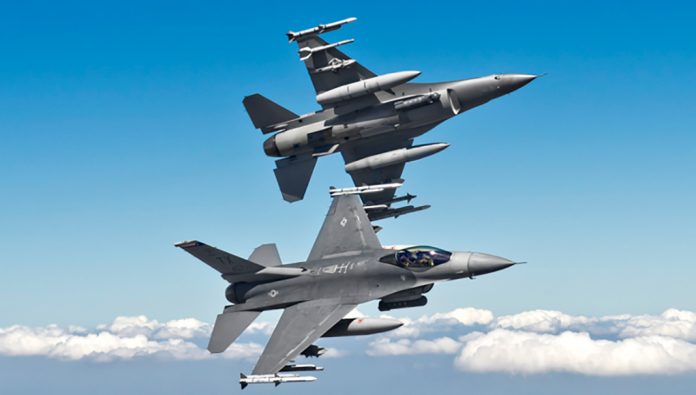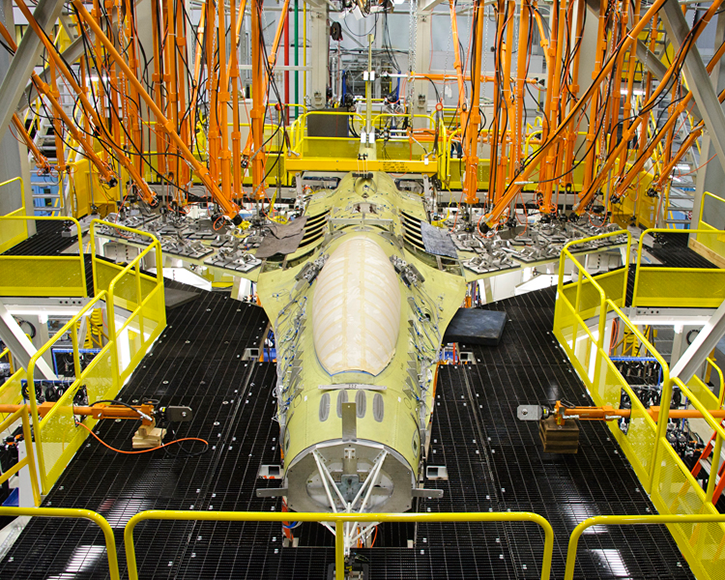
The U.S. Air Force authorized extending the service life of the Lockheed Martin F-16’s designed service life to 12,000 Equivalent Flight Hours — far beyond the aircraft’s original design service life of 8,000 hours. As a result, Air Forces operating the F-16 Blocks 42 through 50 could safely operate their aircraft to 2048 and beyond. The Air Force and Lockheed Martin also reduced projected service life costs for the Block 40-52 fleet.
“This accomplishment is the result of more than seven years of test, development, design, analysis and partnership between the U.S. Air Force and Lockheed Martin,” said Susan Ouzts, vice president of Lockheed Martin’s F-16 program. The announcement followed a thorough evaluation of the F-16 that went through structural testing of Service Life Extension Program (SLEP) structural modifications carried out at Lockheed Martin’s Full Scale Durability Test facility in Fort Worth, Texas.
Through these tests an F-16C Block 50 was subjected to 32 rounds of comprehensive stress tests, representing the equivalent loads of 27,713 flight hours. The airframe was then subjected to several maximum-load conditions to demonstrate that the airframe still had sufficient strength to operate within its full operational flight envelope. Following this exhaustive test the engineers took the airframe apart and inspected each part for fractions. This test data helped determine the definitive, safe flight hour limit for the F-16, beyond its original design service life of 8,000 flight hours.

Validation of the extended flight hour limit directly supports the SLEP goal of extending the service life of up to 300 F-16C/D Block 40-52 aircraft operated by the U.S. Air Combat Command. SLEP and related avionics upgrades to the Air Force’s F-16C/D fleet can safely and effectively augment the current fighter force structure as U.S. and allied combat air fleets recapitalize with F-35 Lightning IIs.
A second phase, or Part II, of the F-16 SLEP airworthiness process continues with the request for Military Type Certificate (MTC), which will be submitted to the Air Force’s Technical Airworthiness Authority in the coming months. Part II seeks to validate further extending the F-16’s operational life based on final service life analysis from extended durability testing.
Earlier this month, Air Force officials disclosed a budget planning option that would phase out over 200 F-15C/D in the 2020s, two decades before their planned retirement. Air Force planners consider replacing them with F-16s upgraded for better survivability in air-to-air combat. The younger fleet of F-15E Strike Eagles would remain intact. Regardless of the future decision, the Air Force plans to keep the F-15C in service at least until 2020.





















